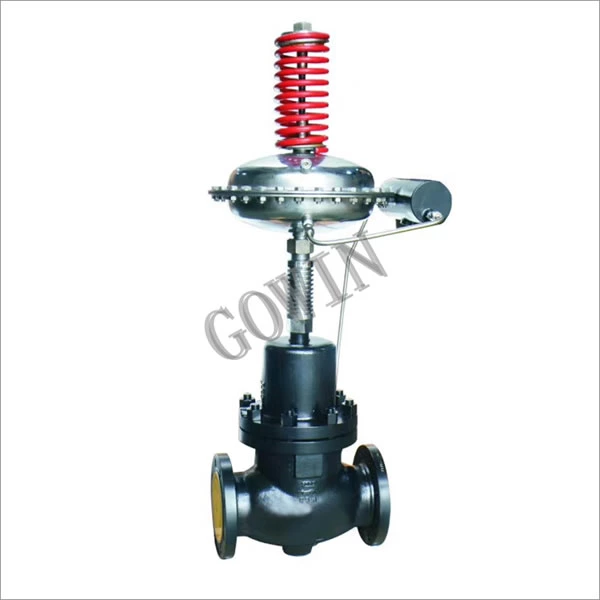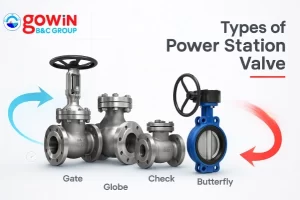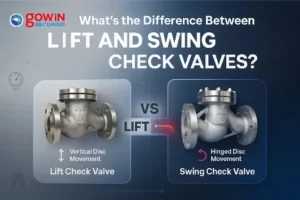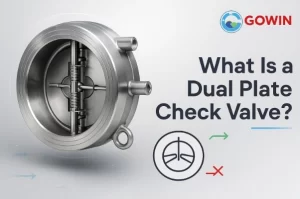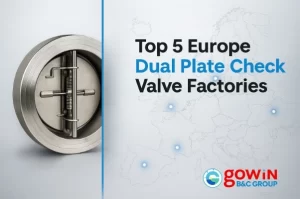Table of Contents
ToggleChoosing the right valve material isn’t just about price. It affects performance, durability, and how well your system handles pressure, temperature, and corrosion. When comparing an electric control stainless steel ball valve with a carbon steel version, each has its strengths and trade-offs.
We’ll explain how stainless steel and carbon steel control valves compare, when to use each, and how your material choice affects cost and performance over time.
Overview of Common Control Valve Materials
Most electric control valves are made from either carbon steel (WCB) or stainless steel (usually CF8M). These materials are chosen for their ability to handle pressure, temperature, and fluid conditions without failing. For a broader overview, you can read about understanding 5 different valve materials.
- WCB (carbon steel): Durable and budget-friendly, ideal for dry or non-corrosive conditions. It’s widely used in oil, gas, and water applications where corrosion isn’t a major concern.
- CF8M (stainless steel): A corrosion-resistant alloy that performs well in harsh or chemically aggressive environments. It’s ideal for food processing, marine, and chemical services.
When selecting control valve materials, understanding the working conditions is key. Choosing the wrong material can shorten valve life, increase maintenance, or cause unexpected breakdowns.
WCB vs CF8M: What’s the Real Difference?
If you’re comparing WCB vs CF8M, the biggest difference is corrosion resistance. WCB, or cast carbon steel, offers strength at a lower cost but doesn’t hold up well against moisture or corrosive fluids. CF8M, a type of stainless steel, includes chromium and molybdenum—making it far more resistant to corrosion and pitting.
WCB handles high pressure and temperature well but needs protective coatings in corrosive settings. CF8M costs more upfront, but it often outlasts carbon steel in challenging environments, especially when dealing with aggressive fluids or outdoor exposure.
What works best depends on the system conditions and application. Indoors, dry, and non-corrosive? WCB may be enough. In damp, salty, or chemical-heavy conditions? CF8M is the safer bet.
Choosing the Right Valve for Corrosive Service
When handling chemicals, saltwater, or aggressive fluids, your valve material can make or break your system. A valve for corrosive service must resist rust, pitting, and chemical damage over time—otherwise, failure is just a matter of when.
In these cases, a CF8M stainless steel valve is usually the better option. It’s built to handle harsh environments without extra coatings or frequent maintenance. Carbon steel (WCB), while strong, just doesn’t hold up well when exposed to acids, salts, or industrial cleaning agents.
If your system involves marine applications, chemical lines, or food-grade processes, go with stainless steel. It may cost more, but it’ll last longer and protect your equipment from early failure.
High-performance control valves engineered to international standards (ASME, API, JIS, BS, DIN). Available in sizes from 3/4″ to 72″ with pressure ratings up to 42.0 MPa. Suitable for water, oil, and gas applications with temperature range from -196℃ to 650℃.
Explore ProductComparing the Cost of Stainless Steel Valves
Stainless steel valves often come with a higher upfront price—sometimes 30% to 50% more than carbon steel. That’s due to the alloy’s materials and longer manufacturing process. So yes, the cost of stainless steel valve options can feel steep at first.
But over time, they often save money.
Stainless steel lasts longer in harsh environments, needs less maintenance, and resists corrosion without coatings or extra treatments. Carbon steel may be cheaper to buy, but you’ll likely spend more on repairs, replacements, or unplanned downtime if used in the wrong setting.
So while carbon steel works fine in clean, dry systems, stainless is often the smarter investment for anything exposed to moisture, chemicals, or heavy use.
When to Choose an Electric Control Stainless Steel Ball Valve
There are times when going with a carbon steel valve might save money, but if your application demands reliability in tough conditions, an electric control stainless steel ball valve is the way to go.
Use stainless steel when:
- You’re dealing with corrosive media like seawater, acids, or chemicals
- The valve will be outdoors or exposed to high humidity
- Cleanliness matters (e.g., food, pharma, or water treatment)
While more expensive initially, stainless steel can reduce downtime and last longer in demanding environments. It’s especially important for automated systems where valve failure leads to downtime or expensive product loss.
Electric Control Stainless Steel Ball Valve: Wrap-Up
When choosing between carbon steel and an electric control stainless steel ball valve, it all comes down to your environment and performance needs. Carbon steel is cost-effective and strong, but if corrosion is even a small risk, stainless steel is worth the investment.
Material choice affects more than price. It impacts how long your system runs smoothly, how often you’ll need repairs, and how much you’ll spend over time.
For long-term value and performance, especially in tough conditions, stainless steel is often the better call.
Not sure which valve material fits your system? Get in touch—we’ll help you choose the right control valve for your needs.
Resources
- ACI-ASTM CF8M Steel vs. ASTM A216 Grade WCB – MakeItFrom.com
- The Role of Molybdenum in Stainless Steel – International Molybdenum Association (IMOA)


